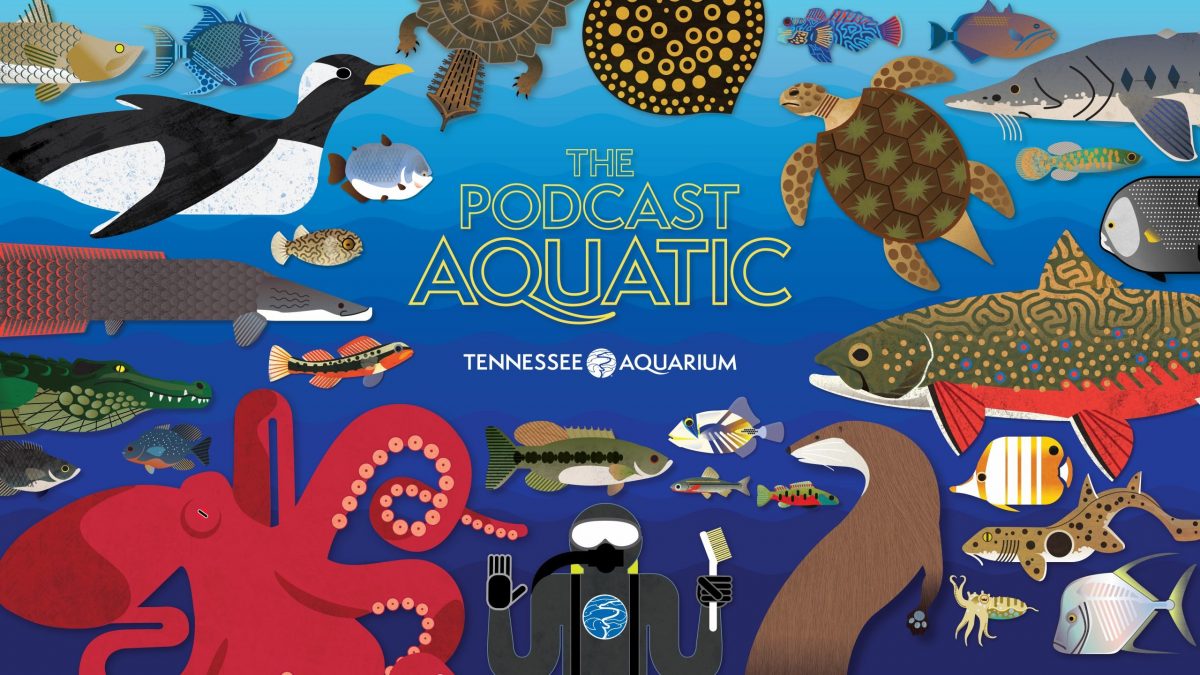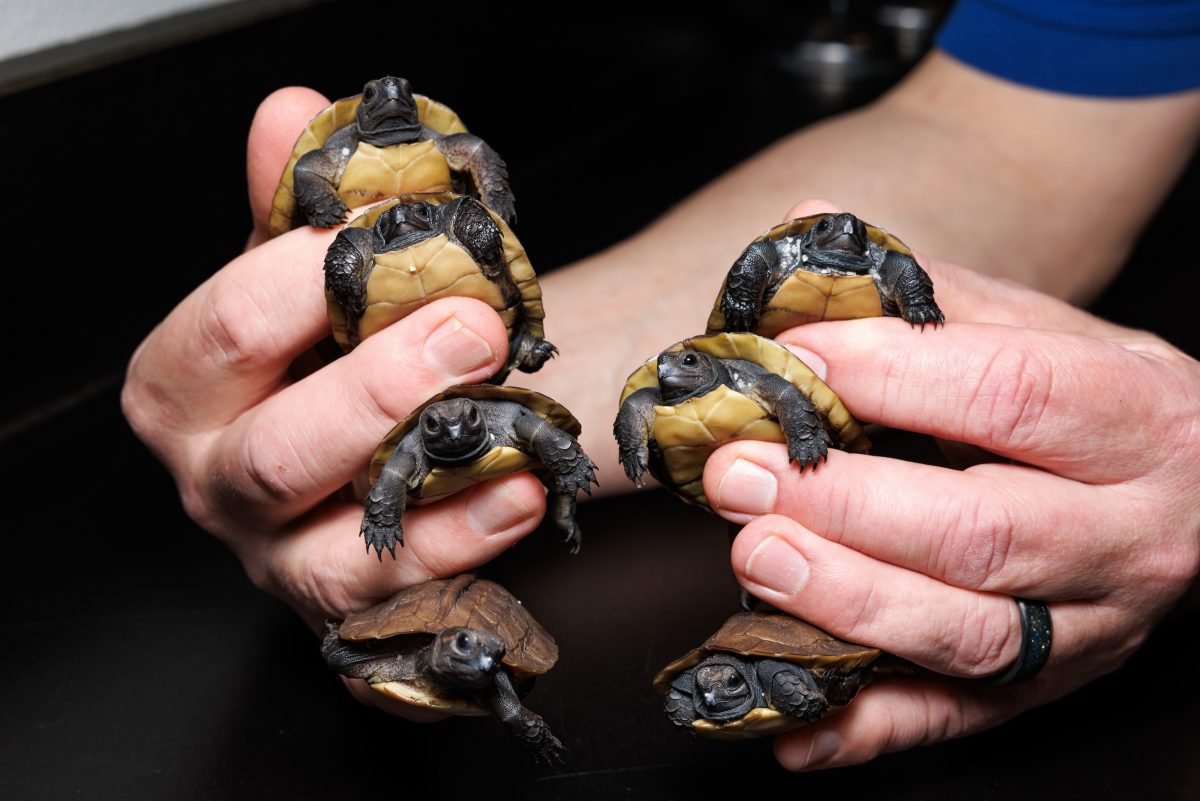[This story was written by Senior Aquarist Kimberly Hurt]
In July of 2022, the Tennessee Aquarium was invited to send two aquarists to the Lionfish Invitational. During this annual expedition, a group of scientists and divers are taken by boat to the Flower Garden Banks National Marine Sanctuary (FGBNMS) about 100 miles off the Texas coast in the Gulf of Mexico.
Hosted by the National Oceanic and Atmospheric Administration (NOAA), the intent of the Invitational is to gather data on and cull the numbers of invasive Lionfish on the reefs that make up the marine sanctuary while evaluating the health of this incredible ecosystem.
Kyle McPheeters, a fellow senior aquarist, and I were selected for this unique opportunity. Before we could set off, we had to tackle a mountain of prep work for the journey: booking flights, hotels and rental cars; updating our SCUBA certifications; practicing with the spears and other gear required for the expedition. This all took place in a rush last August.
Each Lionfish removed during these Invitationals saves thousands of native fish that would have potentially been eaten by these aggressive invaders
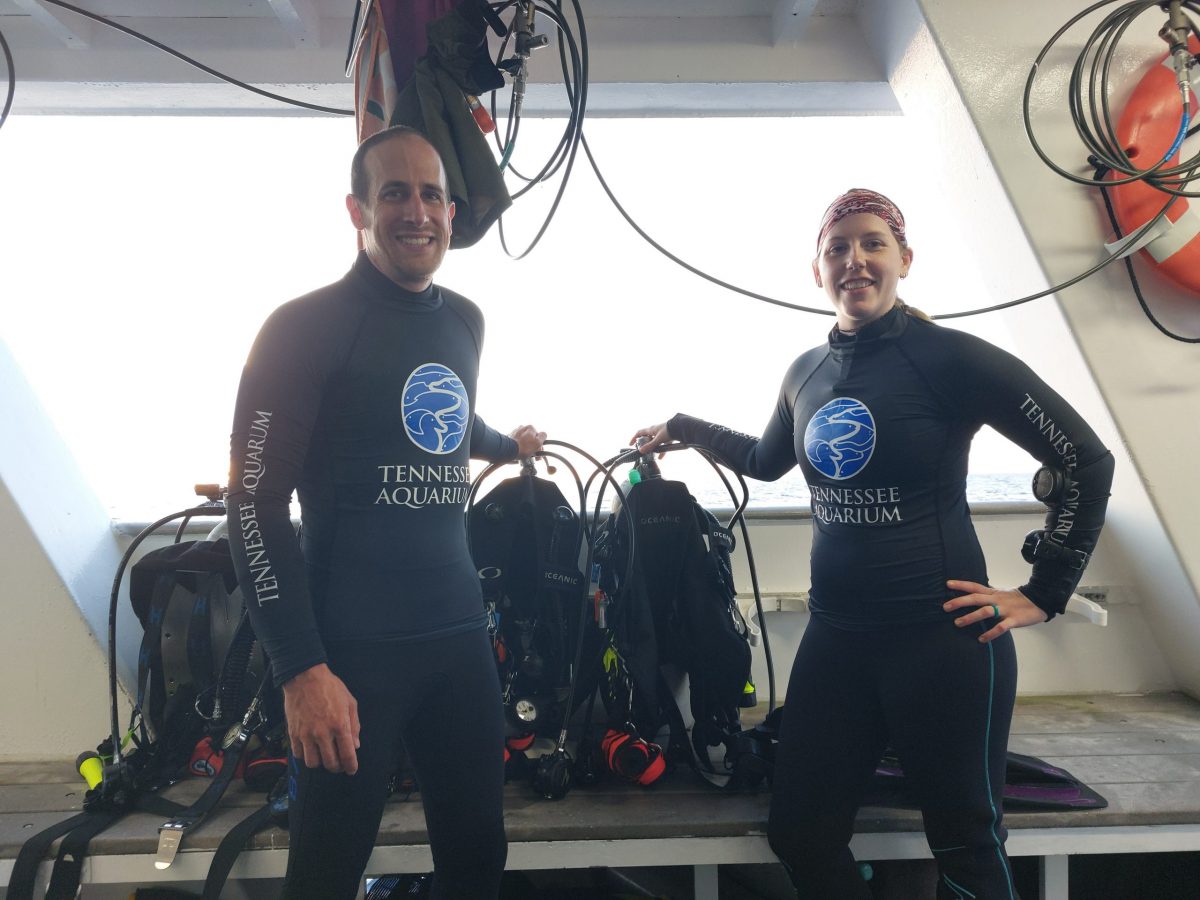
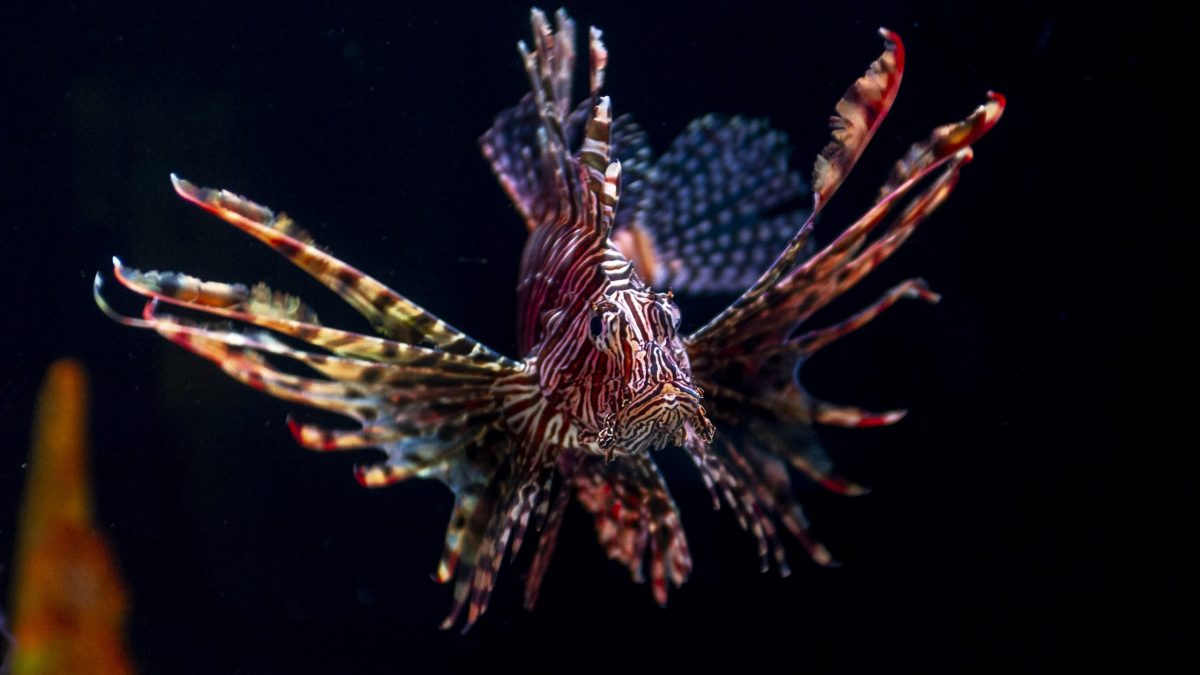
Fig. 1 [LEFT] Senior Aquaristst Kyle McPheeters, left, and Kimberly Hurt are suited up and ready to enter the water of the Flower Garden Banks National Marine Sanctuary. The pair visited the sanctuary after being invited to take part in the National Oceanic and Atmospheric Administration's annual Lionfish Invitational. [RIGHT] A Lionfish swims in an exhibit at the Tennessee Aquarium. An invasive species, the Lionfish is an aggressive predator that can wreak havoc on native fish populations.
In early September, our departure date arrived. We traveled to Houston then drove to Freeport, Texas, where we gathered with the rest of the group for a trip briefing. Here, we were introduced to our companions for the multi-day excursion, learned about the reefs and the work we would be doing while diving. After our last meal on land, we boarded the boat and began the overnight trip out to the Flower Garden Banks.
There were some last-minute preparations, we sanitized, unpacked, and readied our gear, listened to a briefing about rules on the live-aboard boat and ran through the dive plan for the following morning. We went to sleep in the small cabin bunks below deck. The boat would travel through the night to deliver us 100 miles out to sea at the reef, where we would begin our first dives the following morning. It felt like trying to sleep before Christmas, over-eager excitement and the tossing of the waves making it hard to drift off.
Instead of riding the waves far beyond the shores of the Gulf Coast, we awoke back at dock. The crew gathered us again, only this time to let us know the trip had been abruptly cancelled. Overnight, the boat had a mechanical issue. One of the engines had failed, and we could not safely spend three nights on the ocean.
Dazed by this unexpected turn, we repacked our gear, booked flights home, then left without having dipped even a toe in the water. It was disappointing to say the least. All the built-up excitement had come crashing down with no closure, just a farewell, and a promise that we would be invited to try the trip again next year if we wished to return.

Fig. 2 The Tennessee Aquarium is part of an Aquarium-Sanctuary Partnership for America's Keystone Wildlife supported by National Oceanic and Atmospheric Administration's Office of National Marine Sanctuaries, the National Marine Sanctuary Foundation and the Association of Zoos and Aquariums. The Tennessee Aquarium works with Flower Garden Banks National Marine Sanctuary to protect the Gulf of Mexico's marine species.
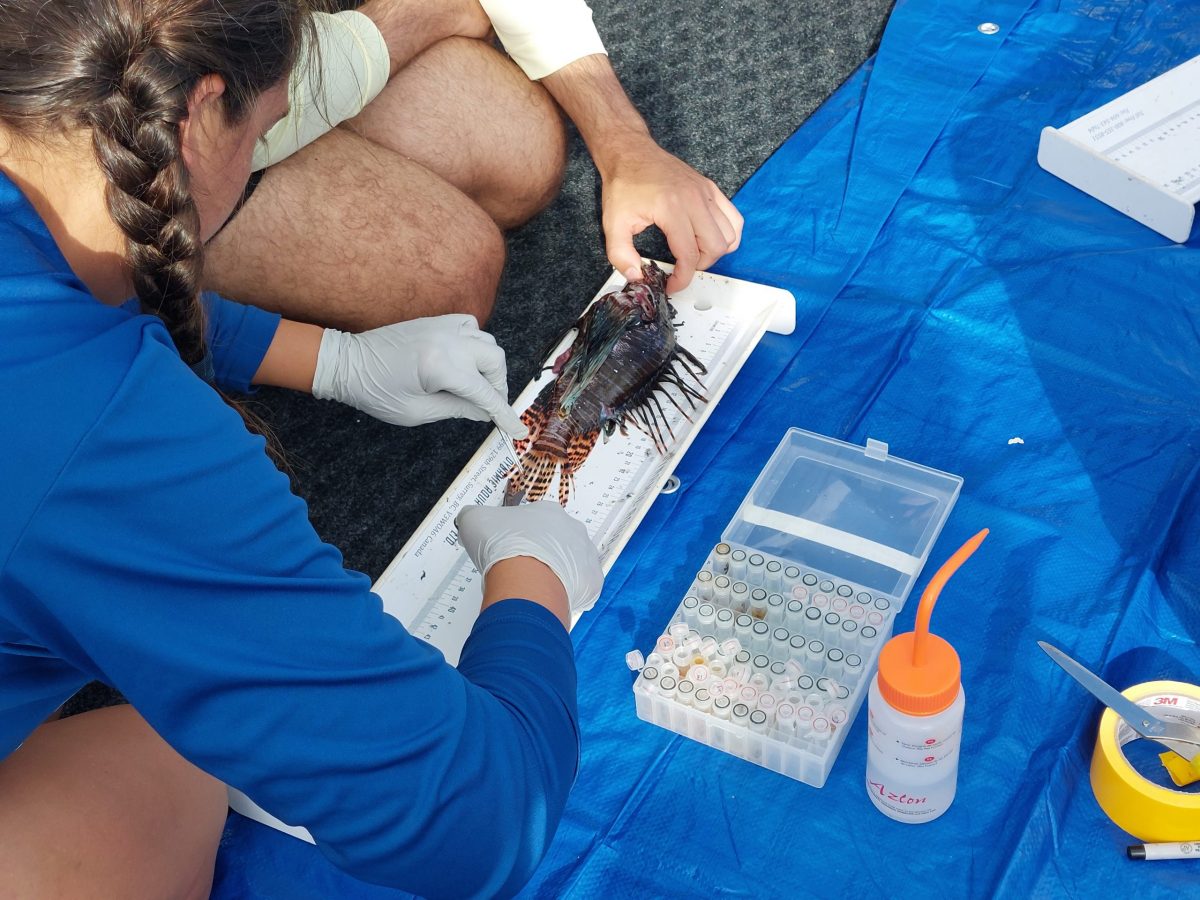
Fig. 3 Scientists take measurements of a Lionfish collected during the 2023 Lionfish Invitational.
The Tennessee Aquarium graciously agreed to a second attempt in 2023. The next opportunity was set to begin in June, nine months and an eternity away. We rebooked flights, rental car and hotels with an odd sense of déjà vu and waited.
Our second departure date arrived, and this time, the boat engine behaved itself. We made it successfully to the dive site and woke at 5:30 a.m. to began our dive preparations, tired and groggy but brimming with excitement and gratitude that we could finally begin the work we’d been thinking about for almost a year.
Our first day was spent at Stetson Bank, a mostly flat rocky, patchy reef that would be the site of four dives. The group was split into buddy teams and given a goal that varied between those who would spend their time hunting or conducting research.
The hunters dove with the intention of spearing Lionfish. These fish would be brought back to the boat, where they could be counted and measured, tissue samples collected for DNA sampling and their stomach contents analyzed.
The science teams were working under a NOAA project and were tasked with carefully netting and bringing back live Lionfish, Graysby, and Grey Snapper that would be surgically radio tagged and then released back onto the reef.
The water was crystal clear, blue and warm. At about 80 degrees, it felt like bath water, and the visibility was great. While we dove, you could see the trailing bubbles of distant divers carefully bobbing amongst the coral ridges and rock structures hunting for their invasive prey.
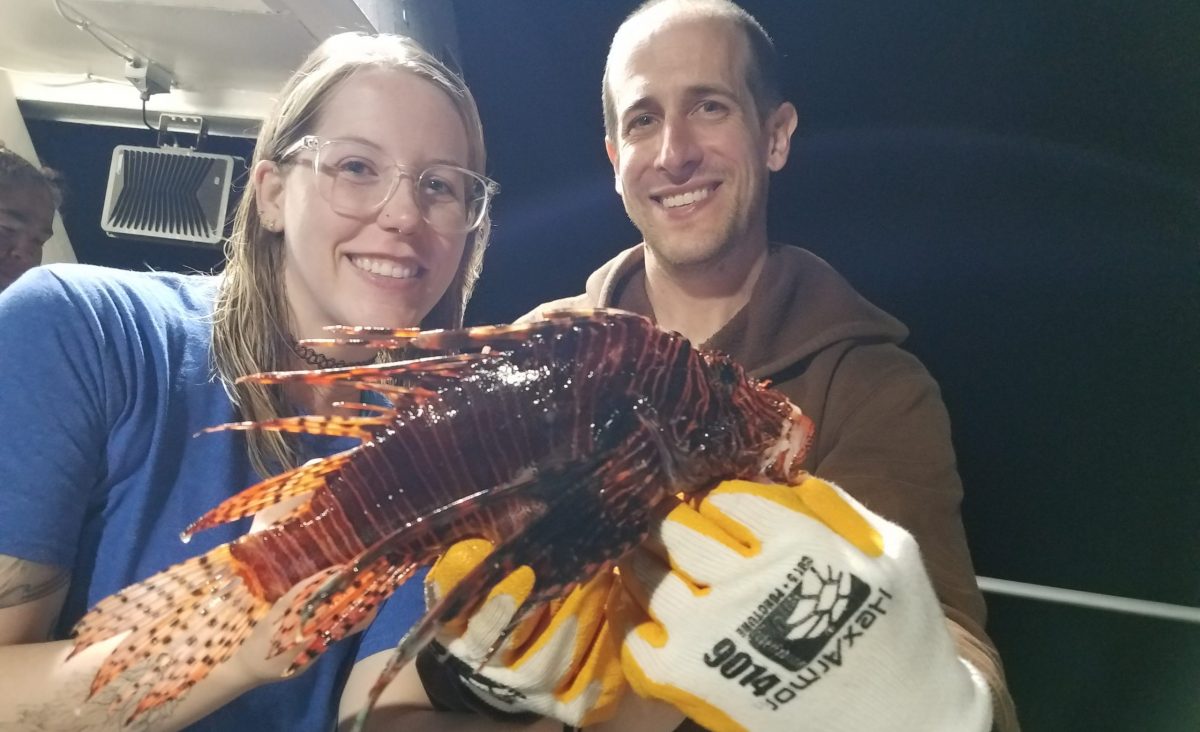
Fig. 4 Senior Aquarists Kimberly Hurt, left, and Kyle McPheeters hold a Lionfish collected during the Lionfish Invitational. This event typically sees the removal of more than 200 Lionfish from the Flower Garden Banks National Marine Sanctuary, but participants in this year's trip collected just half that number, which could mean this invasive fish's population is at manageable levels.
Those who have visited the Aquarium have seen how bustling the Secret Reef exhibit is, and this teeming abundance was mirrored by wild counterpart. Fish were everywhere, from shiny Barracuda watching us near the surface to Sandbar Sharks that drifted stealthily into and out of view. There were stingrays, butterflyfish, snapper, damselfish and schools of colorful juvenile fish. In fact, the one fish that proved most elusive was our intended quarry.
Surprisingly few Lionfish were caught at Stetson Bank, even by teams of veteran divers who participate in the Invitational every year. In total, about 30 individuals were collected at this site. Nevertheless, the science teams, including Kyle and myself, did our jobs well. Over the course of the day, we caught as many Lionfish, Graysby, and Grey Snapper as our scientist needed to tag.
As we rested on between dives, the common conversation topic onboard was a general feeling of surprise at how few Lionfish we were seeing.
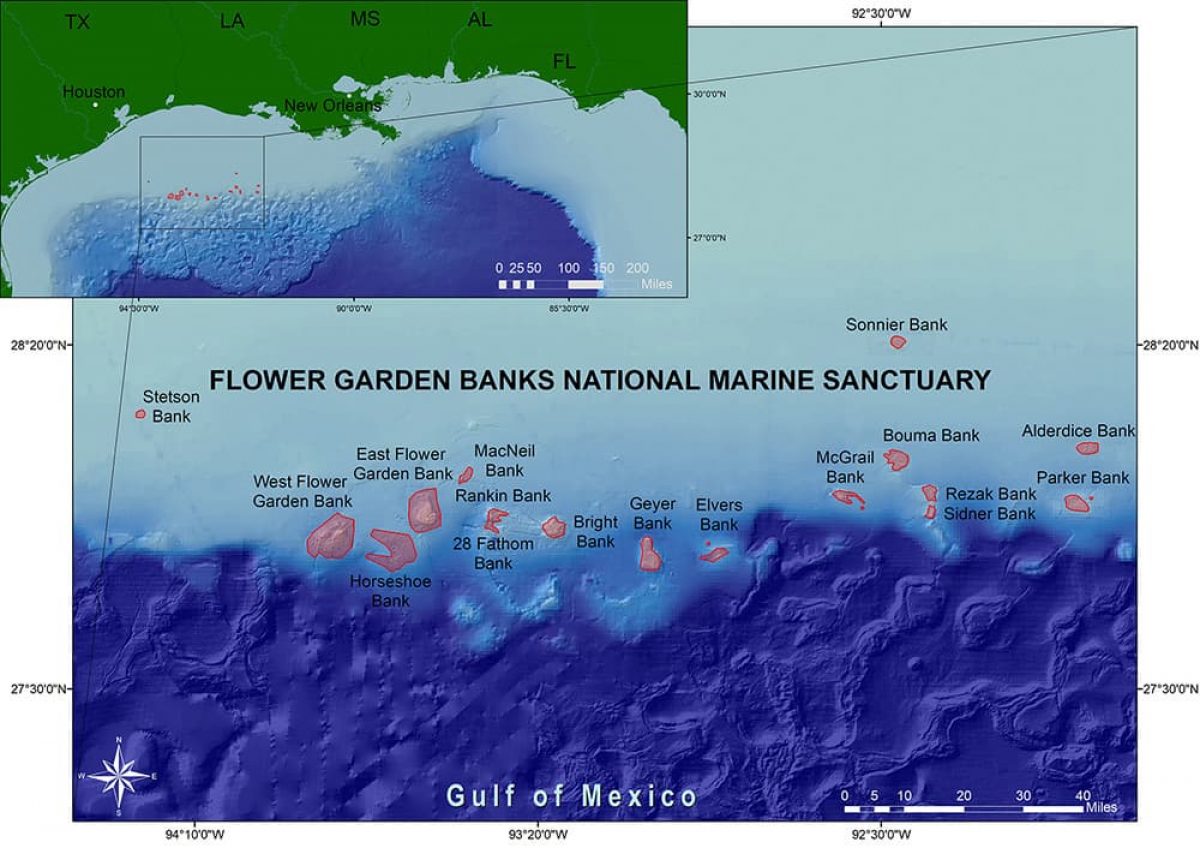
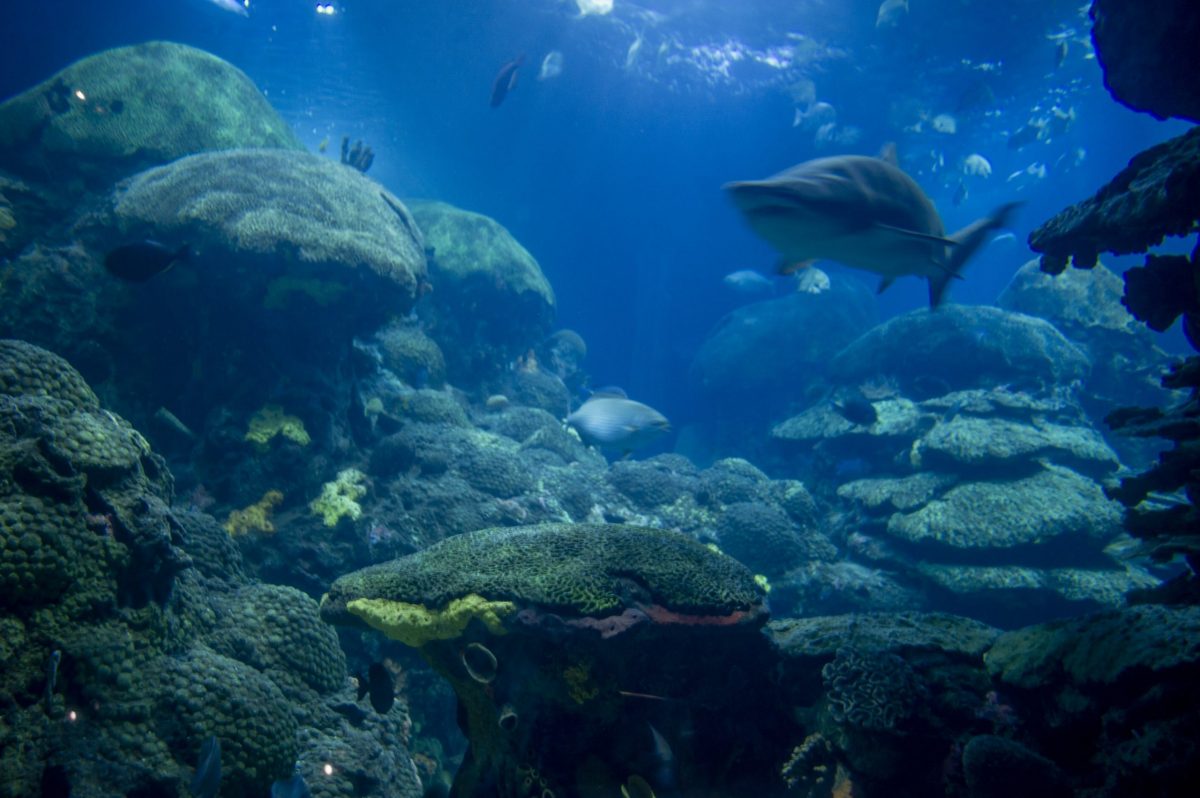
Fig. 5 [LEFT] A map of the Flower Garden Banks National Marine Sanctuary. [RIGHT] A Sand Tiger Shark swims through the Secret Reef at the Tennessee Aquarium. This 618,000-gallon exhibit is modeled on the life-rich reefs protected by the marine sanctuary.
For our second day of diving, we moved to the East Flower Garden Bank. Before we dove, Rachel Bowman, the coordinator of the Invitational, talked to Kyle and me. She told us how excited she was for us to see this reef. It felt silly to me. We had seen Stetson Bank just yesterday, after all, and I wasn’t sure what could be so different about this new site.
Navigating the strong currents down to the reef, however, I realized why she had singled us out. This place felt like home, like we had stepped off the boat and dropped right into the Secret Reef exhibit. We were 700 miles away in Texas, but it felt like we were still in the Tennessee Aquarium, swimming through a place I’d experienced so many times during my career.
It was incredible — mind blowing even.
As every aquarist at Aquarium is well aware, our largest exhibit is modeled on the Flower Garden Banks, but actually seeing, in person, how closely it replicates this environment was a revelation. The Secret Reef is a near-exact replica of these wild reefs dotting the Gulf of Mexico.
I truly had never given a second thought to why the décor of the Secret Reef and its structure were designed as they were, but now it all made sense in stunning clarity. Brain corals, boulder corals, mountain corals that ranged in size from basketballs to small cars. They looked exactly like what I was familiar from the enormous exhibit at the heart of the Ocean Journey building. There were corals growing over and around each other, forming huge structures, deep caverns and crevices through which colorful parrotfish, damselfish and wrasses darted.
The East Flower Garden Bank was a beautiful, thriving reef. I had never been here before, but it immediately felt very familiar.
Rachel Bowman found us after that first dive to ask what we thought. I gushed about how beautiful it was, how familiar it felt. East Bank was so different from Stetson Bank and truly amazing to lay eyes on.
We spent the day here doing exactly as we had the day before, cautiously looking for the fish that NOAA needed to tag for research. The hunters took to the reef, eagerly seeking out invasive lionfish to spear. As a group, we took nearly 70 lionfish from this section of the reef. In our initial briefings, a NOAA researcher shared the number of lionfish that had been gathered during past invitationals. The trip totals ranged from an average of 200-300 Lionfish most years, to a boom catch of 800 fish.
Our total of about 100 fish was a bit disappointing, not quite what I had imagined when we set out. But the low number of Lionfish is actually a good sign. Fewer invasive lionfish fish means the reefs remain healthy.
Each Lionfish removed during these Invitationals saves thousands of native fish that would have potentially been eaten by these aggressive invaders, which lack a natural check to keep their numbers in balance. Since we saw fewer fish than in years past, this potentially means the Invitational’s efforts are working and the Lionfish population is at a manageable number.
Since we were also able to participate in the tagging of Lionfish and other species on the reef, even more data will be available in the future to track the locations and movement patterns of the fish living on these reefs, whether invasive or native.
Despite the unexpected setbacks and hurdles to making it to the sanctuary, this trip was a wonderful experience. The opportunity to visit the thriving, healthy coral reefs of the Flower Garden Banks National Marine Sanctuary gave me a greater appreciation for the animals that we exhibit at the Aquarium.
I now know what this wild reef is like, and it makes me even more proud that we can share the beauty of these fish and corals from these remote reefs in our landlocked state, where many people may not even know that we have a marine sanctuary so close to home, much less have the opportunity to see it in person.
